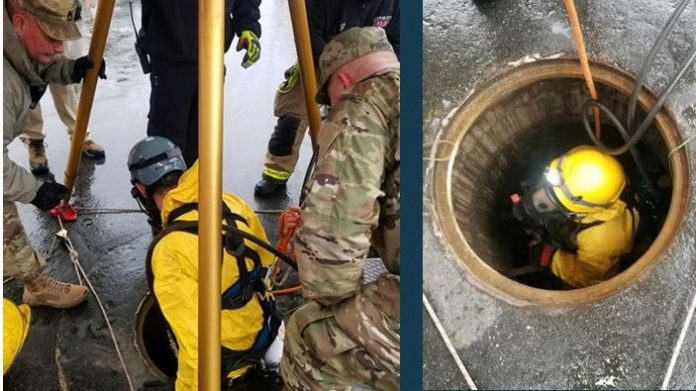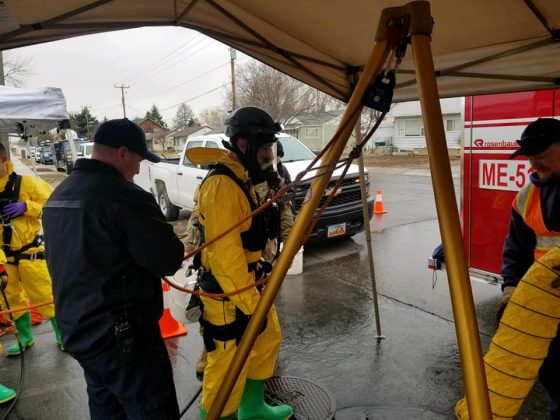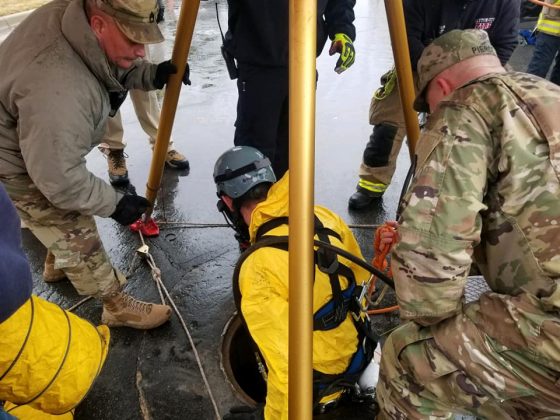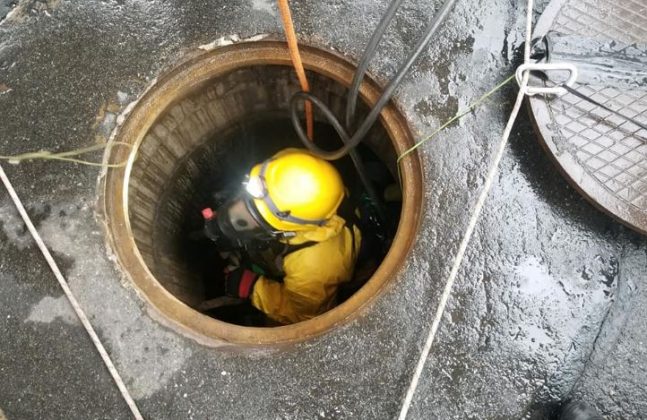
LAYTON, Utah, Feb. 27, 2019 (Gephardt Daily) — The Utah National Guard was called out Wednesday to help authorities investigate a petroleum smell plaguing a Layton neighborhood.
“The 85th Civil Support Team is on the ground in Layton, Utah, ensuring the safety of local communities,” a social media post said. “They stand ready to assist interagency partners at a moment’s notice.”
The issue was a gas odor in a neighborhood west of Interstate 15. It’s an ongoing concern, a statement from the Utah Department of Environmental Quality (DEQ) said.
The DEQ “has not yet determined the source or cause of the petroleum odors detected in an area near the intersection of Gentile and Angel streets in Layton City,” the statement says.
“DEQ, Layton City and the Davis County Health Department (DCHD) are working together to identify the source and looking at a number of possibilities.
“Despite extensive efforts by several agencies, we unfortunately have not yet been able to find the source of the vapors,” said Brent Everett, director of the Division of Environmental Response and Remediation (DERR).
“It could be from a historical contaminant source now mobilized by runoff in the storm drain or a more recent petroleum release. That’s what we are trying to determine and locate.”
The DEQ statement released a detailed timeline:
- Feb. 14, DERR received a notification by a Layton resident of petroleum vapors in their home. After receiving the notice, DERR called the nearby gas station to request Automatic Tank Gauging (ATG) records. DCHD and Layton City Fire Department responded and began indoor air monitoring at the affected homes.
- Feb. 15, DERR reviewed ATG records from the last three months for possible failed leak detection. The records indicated no gasoline leak from the underground storage tanks.
- Feb. 16, the resident called the DEQ Environmental Incident Notification phone number to report the odors had gotten worse and that two other residents were also now smelling odors.
- Feb. 17, the National Response Center received a report of a possible release of hydrocarbons from an 8-inch pipeline. The reporting party later contacted the National Response Center to state they did not locate a release.
- Feb. 19, DERR initiated an investigation of the underground storage tanks at the nearby gas station and sent inspectors to the facility. DERR, with DCHD, also met with the residents and entered the homes to monitor the vapors.
- Feb. 21, DEQ Executive Director Alan Matheson authorized the use of emergency state funds under the Hazardous Substance Mitigation Act (HSMA) to abate the reported vapors in the basements of three homes.
- Feb. 22, DERR with Layton City responded to a resident’s report of strong odors from a storm drain running along Angel Street to Kays Creek.
- Feb. 23, Division of Water Quality (DWQ) asked Layton City and the DCHD to collect water samples from the storm drain. This sample showed elevated levels of benzene, a petroleum byproduct. DCHD sampled drinking water at homes in the affected area. Results came back Feb. 27 showing no detectable levels of contaminants in the drinking water.
- Feb. 25, DEQ met with Layton City and DCHD to coordinate efforts to communicate with residents about the issue and jointly developed a public notice flier. DWQ and DERR collected six additional samples from the storm drain above and below the affected area and from Kays Creek. Results received Feb. 27 indicate petroleum contamination in the storm water line from Gentile Street to Kays Creek. A preliminary ground water sample was collected in the backyard (9 feet below the surface) of one of the affected residences. Results reported Feb. 26 indicate gasoline contamination.
- Feb. 26, subslab vapor samples were collected. Installation of vapor mitigation systems started by DERR’s HSMA contractor. Layton City distributed a flier to the homes in the impacted area. Two additional homes were identified as having odors.
- Feb. 27, DCHD requested assistance with vapor identification from the National Guard. Goeprobe investigation began of the homes and nearby gas station.
“Officials continue to work together and coordinate response with daily calls,” the statement said.
A website with updates and sample results can be viewed by clicking here.










